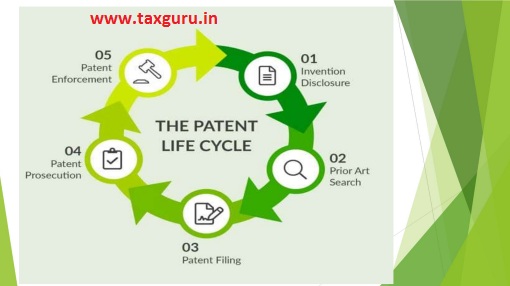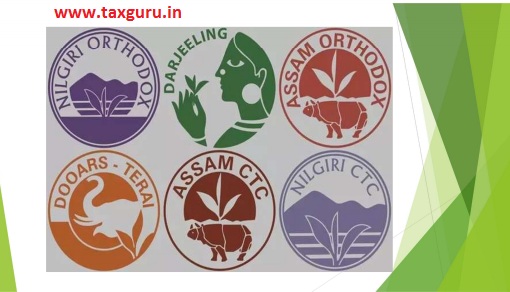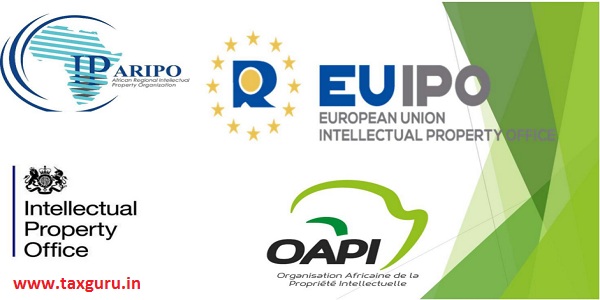What are intellectual property rights?
Intellectual property (IP) is a category of property that includes intangible creations of the human intellect. They usually give the creator an exclusive right over the use of his/her creation for a certain period of time.
The most well-known types are copyrights, patents, trademarks, and trade secrets.
The modern concept of intellectual property can be traced back to 17th century though it was not until the late 20th century that intellectual property became commonplace in the majority of the world’s legal systems. With the rapid increase in the globalization and opening up of the new avenues in India, the “Intellectual Capital” has become one of the key wealth drivers in the present era. There are different country specific legislations, as well international laws and treaties that govern IP rights.
Forbes’ annual list of the World’s Most Valuable Brands—which looks at the top 100 companies from fiscal year 2019
| Rank | Brand | Brand Value | 1-Yr Value Change | Brand Revenue | Industry |
| 1 | Apple | $241.2 B | 17% | $260.2 B | Technology |
| 2 | $207.5 B | 24% | $145.6 B | Technology | |
| 3 | Microsoft | $162.9 B | 30% | $125.8 B | Technology |
| 4 | Amazon | $135.4 B | 40% | $260.5 B | Technology |
| 5 | $70.3 B | -21% | $49.7 B | Technology | |
| 6 | Coca-Cola | $64.4 B | 9% | $25.2 B | Beverages |
| 7 | Disney | $61.3 B | 18% | $38.7 B | Leisure |
| 8 | Samsung | $50.4 B | -5% | $209.5 B | Technology |
| 9 | Louis Vuitton | $47.2 B | 20% | $15 B | Luxury |
| 10 | McDonald’s | $46.1 B | 5% | $100.2 B | Restaurants |
NEED FOR INTELLECTUAL PROPERTY
- An efficient and equitable intellectual property system can help all countries to realize intellectual property’s potential as a catalyst for economic development and social and cultural well-being. The intellectual property system helps to strike a balance between the interests of innovators and the public interest, providing an environment in which creativity and invention can flourish, for the benefit of all.
TO PROMOTE INTELLECTUAL PROPERTY
There are several compelling reasons. First, the progress and well-being of humanity rest on its capacity to create and invent new works in the areas of technology and culture. Second, the legal protection of new creations encourages the commitment of additional resources for further innovation.
Third, the promotion and protection of intellectual property spurs economic growth, creates new jobs and industries, and enhances the quality and enjoyment of life.
TYPES OF INTELLECTUAL PROPERTY
- Trademark
- Patent
- Copyright
- Industrial Design
- Geographical Indication
- Trade Secret
TRADEMARK
- The Trade Marks Act 1999 (“TM Act”) provides, inter alia, for registration of marks, filing of multiclass applications, the renewable term of registration of a trademark as ten years as well as recognition of the concept of well-known ‘ marks, etc.
- The trademark symbol, TM, is a symbol to indicate that the preceding mark is a trademark, specifically an unregistered trademark. It complements the registered trademark symbol, ®, which is reserved for trademarks registered with an appropriate government agency
- Trademarks means any words, symbols, logos, slogans, product packaging or design that identify the goods or services from a particular source. As per the definition provided under Section 2 of the TM Act, “trade mark” means a mark capable of being represented graphically and which is capable of distinguishing the goods or services of one person from those of others and may include shape of goods, their packaging and combination of colors.
- The definition of the trademark provided under the TM Act is wide enough to include non-conventional marks like color marks, sound marks, etc. As per the definition provided under Section 2 (m) of the TM Act, “mark” includes a device, brand, heading, label, ticket, name, signature, word, letter, numeral, shape of goods, packaging or combination of colors or any combination thereof.
- Accordingly, any mark used by the corporates in the trade or business in any form, for distinguishing itself from other, can qualify as trademark.
- It is quite significant to note that the Indian judiciary has been proactive in the protection of trademarks, and it has extended the protection under the trademarks law to Domain Names.
- Indian website is https://ipindiaonline.gov.in/
Points to Consider While Adopting a Trademark
One must do a proper due diligence before adopting a trademark. The trademarks, can be broadly classified into following five categories:
- Generic
- Descriptive
- Suggestive
- Arbitrary
- Invented/Coined
Enforcement of Trademark Rights
- Trademarks can be protected under the statutory law, i.e., under the TM Act and the common law, i.e., under the remedy of passing off. If a person is using a similar mark for similar or related goods or services or is using a well-known mark, the other person can file a suit against that person for violation of the IP rights irrespective of the fact that the trademark is registered or not.
- Registration of a trademark is not a pre-requisite in order to sustain a civil or criminal action against violation of trademarks in India. The prior adoption and use of the trademark is of utmost importance under trademark laws.
- The relief which a court may usually grant in a suit for infringement or passing off includes permanent and interim injunction, damages or account of profits, delivery of the infringing goods for destruction and cost of the legal proceedings. It is pertinent to note that infringement of a trademark is also a cognizable offence and criminal proceedings can also be initiated against the infringers.
PATENT
Patent, in general parlance means, a monopoly given to the inventor on his invention to commercial use and exploit that invention in the market, to the exclusion of other, for a certain period. As per Section 2(1) (j) of the Patents Act, 1970, “invention” includes any new and useful;
- art, process, method or manner of manufacture;
- machine, apparatus or other article;
- substance produced by manufacture, and includes any new and useful improvement of any of them, and an alleged invention;
The definition of the word “Invention” in the Patents Act, 1970 includes the new product as well as new process. Therefore, a patent can be applied for the “Product” as well as “Process” which is new, involving inventive step and capable of industrial application can be patented in India.
Invention which are not Patentable
It is important to note that any invention which falls into the following categories, is not patentable:
(a) frivolous,
(b) obvious,
(c) contrary to well established natural laws,
(d) contrary to law,
(e) morality,
(f) injurious to public health,
(g) a mere discovery of a scientific principle,
(h) the formulation of an abstract theory,
(i) a mere discovery of any new property or new use for a known substance or process, machine or apparatus,
(j) a substance obtained by a mere admixture resulting only in the aggregation of the properties of the components thereof or a process for producing such substance,
(k) a mere arrangement or rearrangement or duplication of known devices,
(I) a method of agriculture or horticulture, and
(m) inventions relating to atomic energy or the inventions which are known or used by any other person, or us or sold to any person in India or outside India.
The application for the grant of patent can be made by either the inventor or by the assignee or legal representative of the inventor. In India, the term of the patent is for 20 years. The patent is renewed every from the date of patent.
COPYRIGHT
- Copyright means a legal right of an author/artist/originator to commercially exploit his original work which has been expressed in a tangible form and prevents such work from being copied or reproduced without his/their consent.
- Under the Copyright Act, 1957, the term “work”, in which copyright subsists, includes an artistic work comprising a painting, a sculpture, a drawing (including a diagram, a map, a chart or plan), an engraving, a photograph, a work of architecture or artistic craftsmanship, dramatic work (recitation, choreographic work), literary work (including computer programmes, tables, compilations and computer databases), musical work (including music as well as graphical notations), sound recording and cinematographic film.
- In the case of original literary, dramatic, musical and artistic works, the duration of copyright is the lifetime of the author or artist, and 60 years counted from the year following the death of the author and in the case of cinematograph films, sound recordings, posthumous publications, anonymous and pseudonymous publications, works of government and works of international organizations are protected for a period of 60 years which is counted from the year following the date of first publication.
- In order to keep pace with the global requirement of harmonization, the Copyright Act, 1957 has brought the copyright law in India in line with the developments in the information technology industry, whether it is in the field satellite broadcasting or computer software or digital technology.
Registration of Copyright
In India, the registration of copyright is not mandatory as the registration is treated as mere recordal of a fact.
The registration does not create or confer any new right and is not a prerequisite for initiating action against infringement.
The view has been upheld by the Indian courts in a catena of judgments.
Despite the fact that the registration of copyright is not mandatory in India and is protectable through the International Copyright Order, 1999, it is advisable to register the copyright as the copyright registration certificate is accepted as a “proof of ownership” in courts and by police authorities, and acted upon smoothly by them.
Enforcement of Copyright in India
Any person who uses the original work of the other person without obtaining license from the owner, infringes the copyright of the owner. The law of copyright in India not only provides for civil remedies in the form of permanent injunction, damages or accounts of profits, delivery of the infringing material for destruction and cost of the legal proceedings, etc, but also makes instances of infringement of copyright, a cognizable offence punishable with imprisonment for a term which shalt not be less than six months but which may extend to three years, with a fine which shall not be less than INR 50,000 but may extend to INR 200,000.
INDUSTRIAL DESIGN
As per the definition given under Section 2(d) of the Designs Act, 2000, “design” means only the features of shape configuration patterns or ornament applied to any article by any industrial process or means whether manual mechanical or chemical separate or combined which in the finished article appeal to and are judged solely by the eye.
However, “design” does not include any mode or principle of construction or anything which is in substance a mere mechanical device and does not include any trademark as defined under the TM Act or any artistic work as defined under the Copyright Act, 1957.
The total period of validity of registration of an Industrial Design under the (Indian) Designs Act, 2000 is 15 years.
Features of shape, configuration, pattern, ornament or composition of lines or colours applied to any article, whether in two dimensional or three dimensional or in both forms, can be registered under the (Indian) Designs Act, 2000. However, functionality aspects of a design are not protected under the (Indian) Designs Act, 2000, as the same are subject matter of patents.
Design of an article is not registrable in India, if it:
- is not new or original;
- has been disclosed to the public anywhere in India or in any other country by publication in tangible form or by use in any other way prior to the filing date or priority date of the application;
- is not significantly distinguishable from known designs or combination of known designs; or
- comprises or contains scandalous or obscene matter.
Enforcement of Design Rights in India
The (Indian) Designs Act, 2000, only provides for civil remedies.
Besides injunction, monetary compensation is recoverable by the proprietor of the design either as contract debt or damages.
An action for infringement of design can only be initiated after the registration of the design, however, an action for passing-off is maintainable in case of unregistered design.
GEOGRAPHICAL INDICATION
- A Geographical Indication is a name or sign used on products which corresponds to a specific geographical location or origin. The use of a geographical indication, as an indication of the product’s source, acts as a certification that the product possesses certain qualities, is made according to traditional methods, or enjoys agood reputation due to its geographical origin.
- An appellation of origin is a special kind of geographical indication used on products that have a specific quality exclusively or essentially due to the geographical environment in which the products are produced.
(GENERIC GEOGRAPHICAL INDICATION)
- If the name of a place is used to designate a particular type of product, rather than to indicate its place of origin, the term no longer functions as a geographical indication.
- For example, “Dijon mustard”, a kind of mustard that originated in the French town of Dijon, has, over time, come to denote mustard of that kind made in many places. Hence, “Dijon mustard” is now a generic indication and refers to a type of product, rather than a place.
TRADE SECRET
Trade secrets includes any confidential business information which provides an enterprise a competitive edge over others.
Trade secrets encompass manufacturing or industrial secrets and commercial secrets, formula, practice, process, design, instrument, pattern, commercial method, or compilation of information which is not generally known or reasonably ascertainable by other.
The unauthorized use of such information by persons other than the holder is regarded as an unfair practice and a violation of the trade secret.
There are no specific statutes under the Indian law for the protection of trade secrets and the same are protectable under the common law rights.
EXAMPLES OF TRADE SECRETS
The secret formula for Coca-Cola, which is locked in a vault, is an example of a trade secret that is a formula or recipe. Since it has not been patented, it has never been revealed.
The New York Times Bestseller list is an example of a process trade secret. While the list does factor in book sales bycompiling chain and independent store sales, as well as wholesaler data, the list is not merely sales numbers (books with lower overall sales may make the list while a book with higher sales may not).
WORLD INTELLECTUAL PROPERTY ORGANISATION
It is an international organization dedicated to helping ensure that the rights of creators and owners of intellectual property are protected worldwide.
This international protection acts as a spur to human creativity, pushing back the limits of science and technology and enriching the world of literature and the arts.
providing a stable environment for marketing products protected by intellectual property, it also oils the wheels of international trade.
DIFFERENT ORGANISATIONS OF INTELLECTUAL PROPERTY
Every country has their own organization for protecting the intellectual property in their own country. Following are the organizations working at International Level.
- European Union Intellectual Property Office (EUIPO)
- Benelux Office for Intellectual Property (BOIP)
- African Regional Intellectual Property Organization (ARIPO)
- Member states of the World Intellectual Property Organization
___
STRATEGIES FOR PROTECTION AND EXPLOITATION OF IPR FOR STARTUPS
1. Make Intellectual Property protection a priority
2. Register Intellectual Property Rights
3. Due Diligence of IP Rights
4. Implement clear and effective policies and strategies for protection of IP Rights
5. Agreements related to Intellectual Property
Startup Valuation can be made on the Basis of IP Rights
New companies don’t really have monstrous products’ stocks or workforce to begin with. Subsequently, a large portion of the estimation of a startup, for the most part, gets from their IP rights. It has been assessed that on the normal, over 80% of the estimation of a new business depends on their IP portfolio.
INITIATIVES FOR NURTURING INNOVATION AND CREATIVITY THROUGH SCHEME FOR START-UPS
Start-ups have been recognised as power houses of innate but immense power of innovation, technology and ideas. The Government of India launched the ambitious scheme ‘StartUp India, StandUp India’ by announcing action plans and initiatives to support early stage start-ups.
As part of this policy, the Government of India has approved and started the “Scheme for Facilitating Start-UPs Intellectual Property Protection (SIPP)” to nurture their innovation and creativity and promote awareness and encourage IPR protection amongst Start-Ups. The Scheme envisages to nurture and mentor innovative and emerging technologies among Start-Ups and assist them in protecting and commercialize it by providing them access to high-quality IP services and resources.
Young entrepreneurs and Investors across the globe definitely have a once in a lifetime opportunity to develop their ideas into a commercial form with the “AATAMNIRBHAR BHARAT” policy pushed by the government.
However, the immediate need of hour requires awareness amongst entrepreneurs regarding the extreme importance of IPR and need of adopting a proactive approach towards protecting their IPR.
In order to change the mindset of these entrepreneurs, it is important to make one understand the need of developing an IP protection strategy at the very inception.
This is undeniable that there might be a cost involved to protect these rights but the cost is rather an investment as IPR is an asset, which will economically reap numerous benefits for the entrepreneur, if protected from the very inception.
“Leveraging intellectual property by Startup\ and body corporates is not only a recommendation but is mandatory for its success and growth in the marketplace.”













